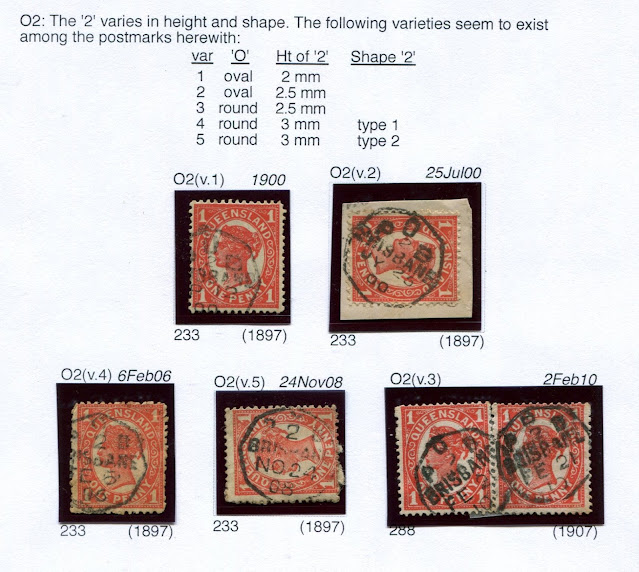- 14(H) - (Home) mail intended for delivery in Queensland outside the Brisbane city delivery area. Codes H1 - H9 (October 1891 - 11 October 1910)
- 14(O) - (Overseas) mail addressed beyond Australia. Codes O1 - O5 (12 November 1886 - 11 October 1910)
- 14(T) - (Town) mail to the Brisbane delivery area. Codes T1 - T9 (15 August 1892 - 31 July 1905)
- 14(X) - (Intercolonial / Interstate) mail. Codes X1 - X7 (24 March 1888 - 22 August 1910)
Varieties
The various date stamps had comparatively short lives and frequent replacement of the type was necessary. These components were obviously made of soft metal, possibly type metal, and probably new assemblies could quickly be put together within the fixed frames. The replacement of the metal type as well as the need to manually adjust the date meant that the following varieties exist:
- Different settings and spacings within the frames
- Differences in the shape and size of the code numerals
- Code numerals appearing sideways
I purchased a detailed study of these varieties at Abacus auction several years ago. I don't know who created it but it appear to be the same study that Campbell in his discussion of this date stamp varieties refers to. Unfortunately the section on the letter 'H' is missing.
Note that this study only deals with the placement and height of the code numerals and not the variations in the code numerals themselves (see H8 example below). It also doesn't cover differences in the numerals and letters making up the dates. Clicking on the individual pages will enlarge them.

H8 showing different code 8 types. At far right is an example of a sideways code numeral 4. Neither of these variety types is covered in the study below
'O' varieties
O1
X3
X4
X5
X7
While this study notes no variations, the size of the code 7 in the 1902 example is much smaller


















No comments:
Post a Comment